<> Papilio agenor Linnaeus, 1758 <>
the Great Mormon ผีเสื้อหางติ่งนางละเวง
Click on any photo to see all photos full size in Lightbox
Additions and corrections to the information provided on this page is always welcome. Please use the Contact form.

Photo taken at Lamnamkok National Park, Chiang Mai, Thailand. ♂ 450m a.s.l.

Until recently this species was known as a subspecies of Papilio memnon but has now been promoted to full species level (Condamine et al. 2023). P.memnon is considered to be confined solely to the SE Asian islands. Papilio agenor is a large butterfly found in all countries across the continental part of the region. This species is sexually dimorphic and there are marked visual differences between the sexes. Females are also polymorphic with several different forms, both tailed and tailless, including agenor, butlerianus, esperi, rhetenorina, distantianus, and alcanor. Both sexes can be seen regularly as they feed on flowers but males are seen more often as they are avid mud puddlers.
Papilio agenor is a species that is able to utilize a variety of habitats due to its larvae having the ability to feed on a wide range of Rutaceous plants, including cultivated Citrus trees. The species is multivoltine with several broods per annum although the life cycle is very variable and is governed by the season as well as the sex of the butterfly.
Synonyms and previously used names: Papilio androgeos, Papilio alcanor, Papilio esperi, Papilio phoenix, Papilio cilix, Princeps memnon, Iliades mestor, Papilio angustus, Papilio memnon agenor
Taxonomy: Animalia - Arthropoda - Insecta - Lepidoptera - Papilionidae - Papilioninae - Papilio - agenor
Regional subspecies: Papilio agenor agenor (India, Myanmar, Thailand, Laos, Cambodia, Vietnam, China, Malaysia), Papilio agenor heronus (Taiwan)
Regional Distribution: India, Nepal, Bhutan, Bangladesh, Myanmar, Thailand, Laos, Cambodia, Vietnam, China, Taiwan, Malaysia, Singapore
 |
Photo taken near Yangon, Myanmar. Female form distantianus |
Habitat: Papilio agenor is found in secondary and montane forest, often near streams, from low elevations up to 2750m a.s.l. in the Himalayas. They are also regular visitors to flowers in urban parks and gardens.
Flight time: most of the year, depending on location. Wingspan: 110-135mm
Life History: egg 3-6 days instar 1 2-6 days instar 2 2-6 days instar 3 3-5 days instar 4 3-5 days instar 5 4-7 days pupa 14-28 days Total egg-adult 30-64 days
All times are approximate and can vary depending on the season and on the host used. The above figures represent exceptional seasonable variation experienced in some locations.
Larval Hosts: Aegle marmelos, Atalantia buxifolia, Atalantia monophylla, Bergera koenigii, Citrus × aurantiifolia, Citrus × aurantium, Citrus hystrix, Citrus japonica, Citrus maxima, Citrus medica, Citrus reticulata, Citrus × limon, Citrus × tachibana, Citrus trifoliata, Clausena harmandiana, Glycosmis chlorosperma, Glycosmis pentaphylla, Paramignya scandens, Skimmia japonica, Zanthoxylum ailanthoides, Zanthoxylum asiaticum, Zanthoxylum nitidum, Zanthoxylum rhetsa (Rutaceae), Magnolia elegans (Magnoliaceae).
Actual host plant used depends upon location and availabilty of plant species.
Adult Food Sources: Nectar - Ixora chinensis, Ixora coccinea, Ixora javanica, Mussaenda frondosa, Mussaenda philippica (Rubiaceae), Duranta erecta, Lantana camara (Verbenaceae), Catharanthus roseus (Apocynaceae), Gloriosa superba (Colchicaceae), Clerodendrum bungei, Clerodendrum paniculatum (Lamiaceae), Bougainvillea spectabilis (Nyctaginaceae), Chromolaena odorata (Asteraceae), Habenaria rhodocheila, Spathoglottis plicata (Orchidaceae), Caesalpinia pulcherrima (Fabaceae), Hemerocallis fulva (Asphodelaceae), Hibiscus x rosa-sinensis, Urena lobata (Malvaceae), Murraya paniculata, Zanthoxylum avicennae (Rutaceae), Ruellia tuberosa (Acanthaceae). Other - mud puddling, animal dung.
References:
Condamine, F.L., Allio, R., Reboud, E.L., Dupuis, J.R., Toussaint, E.F.A., Mazet, N., Hu, S.J., Lewis, D.S., Kunte, K., Cotton, A.M. & Sperling, F.A.H. 2023. A comprehensive phylogeny and revised taxonomy illuminate the origin and diversification of the global radiation of Papilio (Lepidoptera: Papilionidae). Mol. Phylogenet. Evol. 183 (2023) 107758:1-22.
%20gallery.jpg) |
| Chiang Dao Wildlife Sanctuary, Chiang Mai, Thailand ♂ |
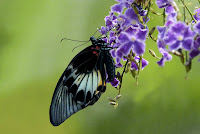 |
| Luang Prabang, Laos ♀ |
%20gallery.jpg) |
| Chiang Dao Wildlife Sanctuary, Chiang Mai, Thailand ♂ |
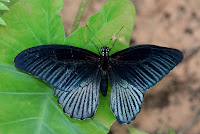 |
| Phnom Kulen, Siem Reap, Cambodia ♂ |
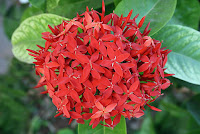 |
| Ixora coccinea, a nectar source |
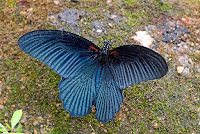 |
| Lamnamkok National Park, Chiang Rai, Thailand ♂ |
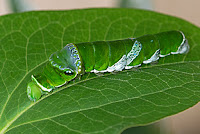 |
| late instar larva |
 |
| Close-up of female about to feed on Lantana |
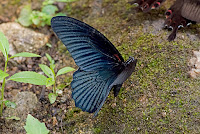 |
| Lamnamkok National Park, Chiang Rai, Thailand ♂ |
 |
| Duranta erecta, another nectar source |
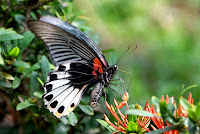 |
| Doi Suthep-Pui N.P, Chiang Mai, Thailand ♀ form agenor |
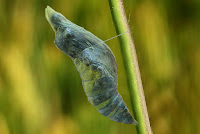 |
| pupa |
 |
| Zanthoxylum asiaticum, a larval host |
 |
| Glycosmis pentaphylla, another larval host |
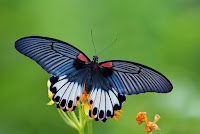 |
| Lamnamkok N.P, Chiang Rai, Thailand ♀ |
 |
| Doi Suthep-Pui N.P, Chiang Mai, Thailand ♂ |
Links to other pages in this series for species in the same subfamily
Graphium nomius
Papilio agenor
Papilio helenus
Troides helena
